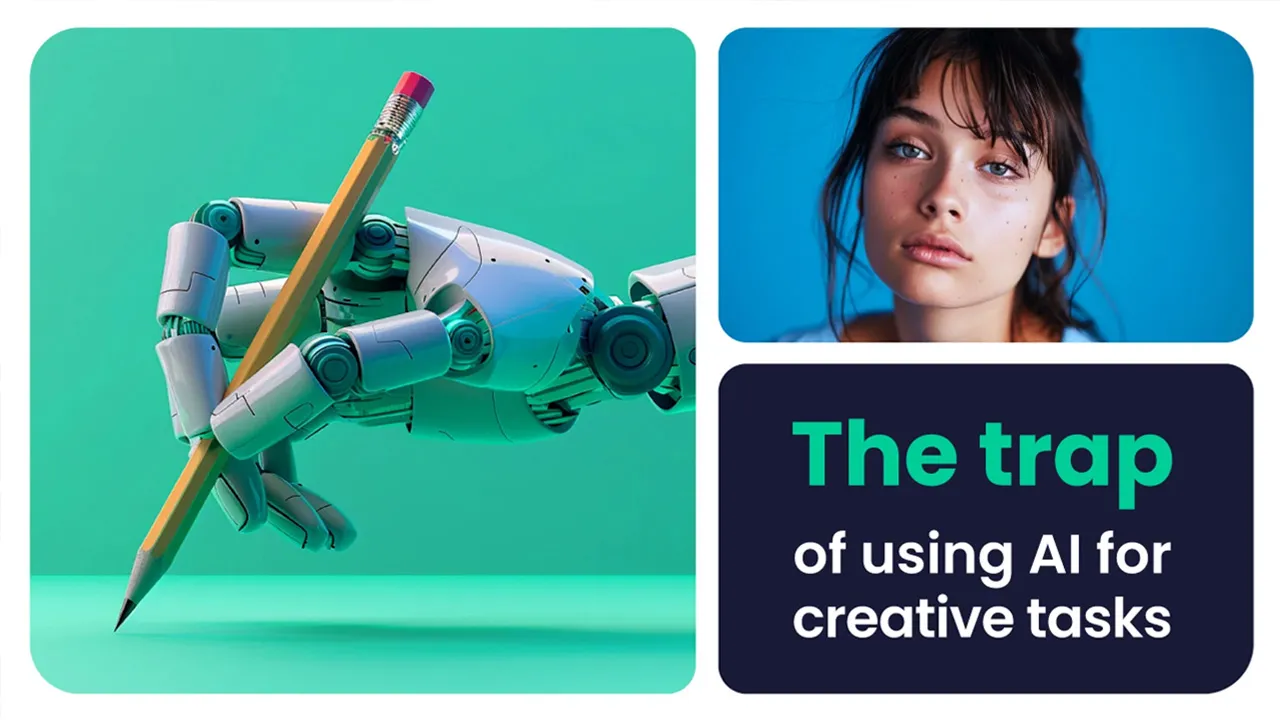How much is AI used in 2024 and what can be done with it? An increasingly common question, even in creative industries.
AI has become a reliable partner for simplifying processes, research, or even content creation, streamlining the repetitive and time-consuming tasks of many professions. However, there are also pitfalls to using artificial intelligence, especially in marketing.

"Chat GPT, behave like a Marketing Manager"
The successful use of AI depends primarily on the prompt given to it. Whether you're doing research and documentation or content creation, AI solutions don't have any more information than what you provide, so a correct and complete prompt makes the difference between a good and a bad result.
What can you do to have correct prompts? Offer context, tell it from which professional angle to approach it, leave clear instructions, or request questions about everything necessary to give a complete answer.
The biggest challenge: Uniqueness
While AI has undoubtedly propelled marketing and other industries to new heights of performance and efficiency, the battle between AI and human creativity is always won by humans.
AI-generated content might be impressive at first glance, but upon closer inspection, the creative directions and formatting tend to be quite similar every time. This is why artificial intelligence will never replace creative industries, which are built on emotional intelligence and the unique mark of creative professionals.
Of course, utilizing these tools can be beneficial. Imagine building an editorial or social media calendar and learning from AI about the most relevant and interesting topics for your audience. You can then create content based on your own expertise. Additionally, when you're facing a creative block, suggestions from AI can jumpstart the process, similar to brainstorming sessions where the beginning is always the most challenging.
The key takeaway is to have final content with a human touch, one that doesn't fall into standardized patterns of "made-to-order" content.
So, how do we use AI in marketing?
- You can use AI in any way that helps us achieve your goals.
- You can do research - on consumers, competitors, success stories, or keywords for SEO.
- You can learn something new, without wasting time searching - from specific terminology and concepts, to tools or even Excel formulas.
- You can get inspired when you're stuck. You can brainstorm with AI.
- You can check your results, make corrections to texts, or see if you missed any angles.
- You can communicate one-on-one with your customers, without allocating enormous resources to reading and generating conclusions from large volumes of data. This might be the most important benefit of AI in marketing, and it's already implemented in the ad tools of companies like Google, Meta, Hubspot, and others.
We're already living in the future and have front-row seats to the development of a new era: the era of artificial intelligence. Read more about AI here.
Similar Articles
Want to chat more about this topic or any other topic?
Book a meeting with one of our digital monsters!